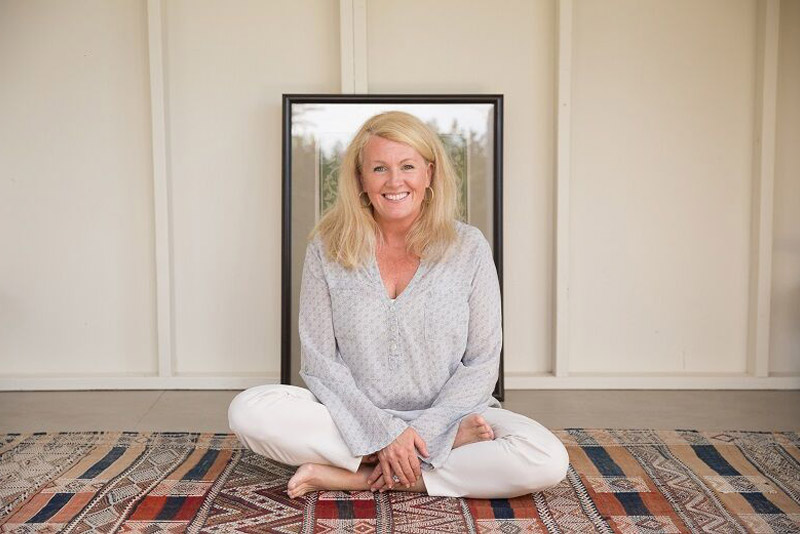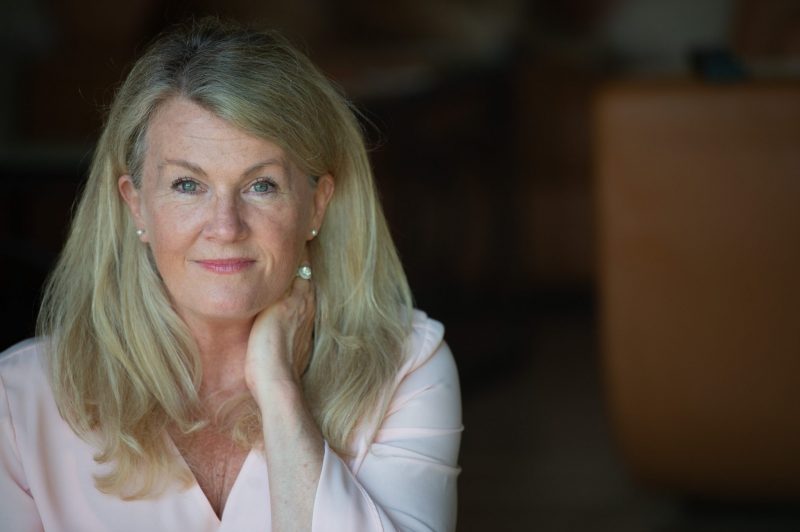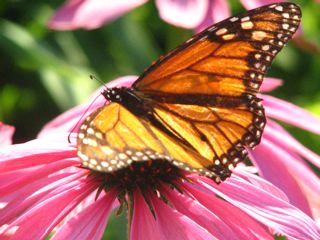Cultivating Joy

Cultivating Joy
Have you ever spent even five minutes remembering events and experiences that made you feel joyful? I urge you to try it. Close your eyes and invite your most joyous memories to pop into your awareness. They may flood in and as they do, they can instantly create feel good hormones and quite possibly bring you bliss!
That’s because joy is a powerful, transformative force, one that extends beyond momentary happiness: it’s an innate, natural capacity we are all born with. Joy is a spontaneous, often surprising emotion that is self-generated and independent of external circumstances; it’s one that is essential for optimal mind/body well-being, and fortunately, it can be cultivated.
To enjoy something means being engaged in a pleasant, expansive experience, literally being in joy. Being “joyful” or “joy-filled” is to embody joy, radiate positivity, and to be content – it’s a state of being that lasts beyond a single moment of happiness.
Contrary to popular belief, you don’t have the ability to choose joy. However, you can strategically cultivate the ability to experience joy – by being mindful, appreciating your life, thinking about joy, recognizing joy is your birthright, and reflecting on joyful moments.
Did you know there is a joy center in the brain that can continue to grow throughout your life? As it does, you gain the ability to handle greater levels of joy and stress before needing to rest and recover. When you experience joy, your body releases feel-good chemicals like dopamine and serotonin which promote a more balanced mood and reduced stress levels. Feeling joyful can lower blood pressure, reduce inflammation, and enhance your immune system functioning. It’s also an essential aspect of psychological well-being as it cultivates contentment and confidence, and creates emotional connections and a sense of belonging.
Mindful Appreciation
Another key to experiencing more joy is mindful living. Mindfulness refers to a state of awareness – an awareness that is engaged in what you are experiencing while you are experiencing it – whether it be while interacting with a person, place, or thing. When you are being mindful, you can more easily notice and enjoy objects of your experience – whether it’s a lovely piece of music, the stars twinkling in the sky, or the sunlight glistening on the leaves.
Mindfulness not only cultivates present moment awareness; it also cultivates self-awareness – awareness of how you feel and how you respond to what is happening. With mindfulness, you can be aware of joy, gratitude, and feeling connected, or, any tendency of criticizing yourself and/or others. With mindfulness, you can override these tendencies and reorient your attention to focus on that which is beautiful, wholesome, pleasant, and satisfying. Remember, what you look for, you will find.
You can actually rewire your brain toward a more joyful default when you regularly engage in gratitude and appreciation. For instance, while on a walk, aim to appreciate what you sense, perhaps it’s the breeze or warmth of the sun on your skin, or your ability to stand on the ground, or hearing a birdsong. You can also practice while eating, as you take your time you can appreciate your senses as well as the sight, smell, and taste of the food as you chew and swallow. And you can appreciate your body’s wisdom as it knows what to do with what you’ve just eaten!
When you intentionally bring mindful awareness to what you are doing while you are doing it, you become aware of your bodily sensations, feelings, and thoughts. Then, whether you’re drinking your morning cup of tea or coffee, going for a walk, enjoying your favorite snack, or interacting with someone who gets you, you naturally cultivate more joy and appreciation.
You can also tune in to the generosity you receive from others—the smile, the door held open, the hellos – as well as becoming aware of the effort of those who work on your behalf: those who grow your food, build the roads, or maintain the infrastructure of energy and water that allow you to live more easily.
These moments of appreciation are available to you – not just some of the time – but all of the time, and are essential for cultivating joy.
Joy is Yours
It’s your birthright to be joyous, and when you experience joy there’s a lightness of being, a feeling of freedom, and a sense of connectedness – it’s likely the closest you’ll feel to being your true self. And, the good news is that joy is available in any moment!
You may have heard this psalm from the Judeo-Christian tradition: “Weeping may endure for a night, but joy comes in the morning.” It’s a beautiful reminder that no matter the difficulties we face, joy has a way of returning.
For Hindus and Vedantists, joy is referred to as ananda, a Sanskrit word meaning “bliss” or “divine joy”. It’s considered to describe the state of ultimate contentment that comes from knowing your own divine nature and connection to the universe. According to the Vedas, each human being has a layer of bliss that exists as our nature. It is described in the ancient text of a Upanishads, “The Self is joy. The Self is bliss. Whoever finds and knows the Self finds and knows eternal joy.”
In Islam, joy is often linked to spiritual fulfillment and gratitude to God, and there’s an inner joy that can be found in both good times and challenging ones – a joy rooted in faith and trust in God’s plan.
Buddhism often speaks of joy in the context of mudita, a Sanskrit word meaning sympathetic joy. It refers to the pleasure and joy one feels from witnessing the happiness and success of others. The Dhammapada, a collection of sayings of the Buddha, states, “Live in joy, in love, even among those who hate. Live in joy, in health, even among the afflicted. Live in joy, in peace, even among the troubled.” Good advice.
Each of these traditions teaches that joy is not simply an external experience, but a gladness of the heart which reflects a deeper, spiritual state of contentment and connection to something greater than oneself.
Journaling for Joy
Hopefully, joy is something you experience every day of your life, however, when stress is high or you’re dealing with difficulty, you might feel disconnected from your joy. If this happens, reflecting on joyful experiences can help lift your spirits. Truly! Your sorrow or suffering doesn’t have to end in order for joy to arise. They are not mutually exclusive experiences.
Remembering your joyful experiences and journaling about them increases your awareness of the good moments in your life and enhances your capacity for happiness.
Ask yourself the questions below, and write what comes up for you in your journal:
- Close your eyes and consider moments that have brought you joy. The images that show in your minds eye are not in any particular order and one isn’t likely more important than the other. When you start to become aware of theses moments, write them down.
- Whose company can you count on to bring out your joy?
- What activities come to your mind that bring you joy?
- What are you’re grateful for today? Identify 3 things. Do they bring you joy?
Your Joy List
A Joy List is a compilation of various activities, moments, and experiences that bring you happiness and fulfillment. Creating a Joy List involves reflecting on what brings you happiness, as you did above, and exploring what made these moments so special. You may discover an activity that you plan to engage in to cultivate more joy!
Similar to a Gratitude List, a Joy List is comprised of specific activities that genuinely spark joy in your life, whether that’s enjoying a warm cup of coffee, laughing with friends, dancing in a grocery store, or spending time in your garden.
Identify 10 (or more) specific people, places, things, and activities that bring you joy. Write them in your journal and date it.
Not only can you cultivate joy by simply creating the list, but also when you reread your joy list, you can feel your mood shift.
After you make your list, choose a few activities to engage in this week. For example, if being in nature or dancing to your favorite song is on your list, go outside for a short walk or tune up the tunes. Why not include a moment of joy every day (highly recommended!), or, schedule a joyful activity a few times each week? Invite a friend to join you for joy is better shared! Connecting with people who are glad to be with you is the primary way you can experience and amplify your joy!
Joy is not a luxury, but truly is necessary for your mental health and wellbeing. Be proactive and invite an experience that brings you joy will keep you attuned to joy and create space for it to arise even on difficult days. As you put your attention on joy, you develop a habit that keeps your spirit bright!
Sarah McLean
Sarah McLean is an acclaimed teacher and thought leader who is determined to create more peace on this planet by helping people wake up to the wonder and beauty of their lives and the world around them through the practices of meditation and mindfulness. She inspires audiences everywhere blending the spirit of Zen wisdom with Vedic knowledge and self-inquiry. She helps demystify meditation and makes it accessible to anyone. It was over 30 years ago when she began her daily meditation practice, and moved in to a Transcendental Meditation community. There, she received advanced training in meditation and studied Ayurveda. Since 1993, when she became the education director for Deepak Chopra’s Center for Mind Body Health, she's been teaching contemplative practices and mind/body health. In 1997, she went to India to live in a traditional ashram in India, When she returned to the States, spent two years as a resident trainee in a Zen Buddhist monastery. She fell in love with Self-inquiry and served as the director of Byron Katie's School for the Work. In 2012, she founded the McLean Meditation Institute, home of the Meditation Teacher Academy which certifies meditation and mindfulness teachers through its 300-hour teacher training program. Her bestseller, Soul-Centered: Transform Your Life in 8 Weeks with Meditation, and her most recent book, The Power of Attention: Awakening to Love have received rave reviews. She now lives in Santa Barbara, California where she trains meditation teachers and offers online classes and lives a life she loves.






